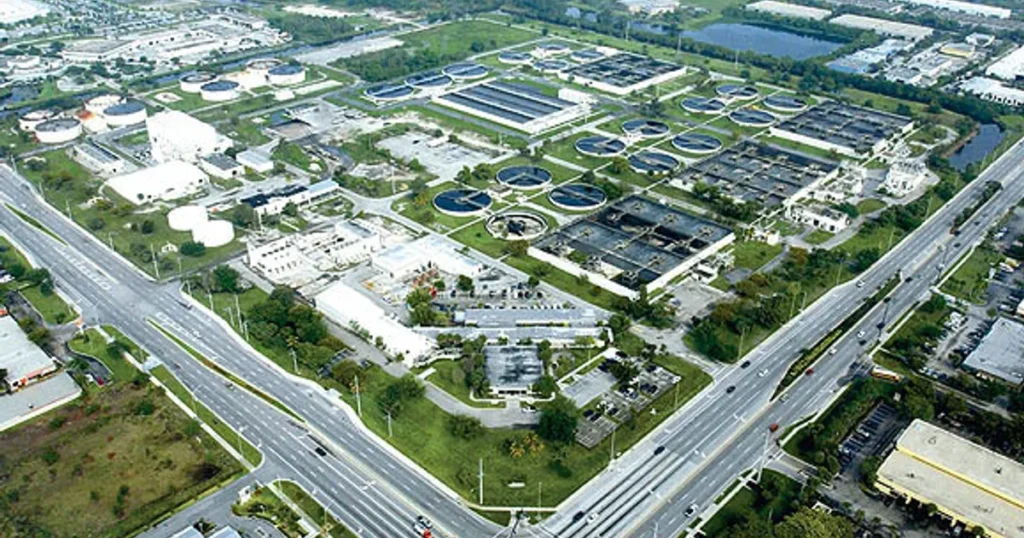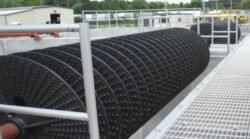
Broward County North District Regional Wastewater Treatment Plant

An Integral Asset: Broward County North District Regional Wastewater Treatment Plant
Introduction
Wastewater treatment is a critical component of modern urban infrastructure, ensuring public health, environmental sustainability, and community well-being. Serving as a cornerstone in this essential service is the Broward County North District Regional Wastewater Treatment Plant (NDWWTP). Nestled at the nexus of urban development and ecological preservation in Broward County, Florida, this plant plays an integral role in managing the wastewater of a quickly growing population. This article explores the history, capacity, operations, recent developments, and community engagement efforts of the NDWWTP.
Population Served
Broward County, a diverse and rapidly growing region located in southeastern Florida, is home to an estimated 1.95 million residents. As the county continues to expand and urbanize, the demand for efficient wastewater management escalates. The North District Regional Wastewater Treatment Plant serves a significant portion of this population, including major municipalities such as Pompano Beach, Deerfield Beach, and Coconut Creek.
Wastewater Volume and Treatment Capacity
The NDWWTP is tasked with treating an average of 40 million gallons per day (MGD) of wastewater. However, its maximum treatment capacity is designed to accommodate up to 50 MGD, ensuring there is ample room for future population growth and emergency surges due to heavy rainfall events typical in South Florida. This strategic foresight exemplifies the plant’s importance in providing a reliable service for years to come.
Treatment Processes and Technologies
The NDWWTP employs a multi-stage treatment process to ensure that wastewater is adequately treated before being discharged or reused. These processes include:
-
- Preliminary Treatment: This phase involves the removal of large debris and grit, which can cause damage to subsequent treatment processes. Screens and grit chambers are the primary tools used during preliminary treatment.
-
- Primary Treatment: In this stage, sedimentation tanks allow solids to settle, producing primary sludge while separating the clarified liquid.
-
- Secondary Treatment: Biological processes utilize microorganisms to consume organic matter. Activated sludge systems or biofilters are commonly employed methods, followed by secondary clarifiers.
-
- Tertiary Treatment: This advanced treatment phase entails nutrient removal, particularly nitrogen and phosphorus, to prevent eutrophication in natural water bodies. Filtration and chemical treatments are vital components of tertiary treatment.
-
- Disinfection: To eliminate any remaining pathogens, chlorine or ultraviolet (UV) light is used, ensuring the water is safe before being discharged or used for irrigation.
The end product of these stages is treated water that meets or exceeds regulatory requirements set forth by the Environmental Protection Agency (EPA) and the Florida Department of Environmental Protection (FDEP).
Recent Local News and Developments
Over the past year, the NDWWTP has been in the news for several key reasons. Most prominently, in July 2023, the plant celebrated the completion of a $25 million upgrade project aimed at increasing its resilience to climate change. This project included the installation of advanced stormwater management systems and improved energy efficiency through solar panel installations, reflecting Broward County’s commitment to sustainability and climate resilience.
Moreover, the NDWWTP has been recognized for its pivotal role during the COVID-19 pandemic. The plant participated in a groundbreaking wastewater surveillance project, analyzing samples for SARS-CoV-2 viral RNA. This initiative provided crucial data to public health officials, aiding in the detection and tracking of virus outbreaks.
Key Projects and Future Plans
Several key projects are either underway or slated for commencement, each designed to bolster the NDWWTP’s capacity and efficiency, as well as to minimize its environmental footprint.
1. Biosolids Management Upgrade
One such project is the Biosolids Management Upgrade. This initiative aims to enhance the plant’s capacity to convert wastewater sludge into reusable biosolids through advanced anaerobic digestion. By doing so, the project will significantly reduce the volume of waste sent to landfills while producing biogas for energy recovery.
2. Advanced Nutrient Removal
Another significant project involves implementing an advanced nutrient removal system. Although the current tertiary treatment phase adequately reduces nitrogen and phosphorus levels, the new system will push the boundaries of nutrient removal efficiency. This initiative is critical in safeguarding the health of Biscayne Bay and the Atlantic Ocean from nutrient pollution.
3. Reclaimed Water Expansion
Expanding the use of reclaimed water is a top priority. A dedicated pipeline system is being constructed to deliver reclaimed water for irrigation and industrial uses. This project aligns with regional water conservation goals and reduces the strain on Broward County’s potable water supply.
Community Engagement and Public Education
The NDWWTP recognizes that community engagement and education are pivotal to its success and sustainability. To this end, the plant has initiated several programs designed to inform and involve the local population.
Educational Tours and School Programs
The plant offers guided tours for school groups, universities, and community organizations. These tours provide a firsthand look at the intricacies of wastewater treatment and the importance of sustainable water management. Specialized programs developed in collaboration with local school districts also aim to integrate wastewater education into science curricula.
Public Workshops and Open Houses
Periodically, the NDWWTP hosts public workshops and open houses. These events serve dual purposes: they provide transparency about the plant’s operations and progress on key projects, and they offer a platform for community input and dialogue. The plant’s engineers and scientists are available to answer questions, dispel myths, and explain technical processes in layman’s terms.
Online Portal and Social Media
To keep the community informed and engaged, the NDWWTP has developed an online portal featuring real-time updates, project timelines, and educational resources. Additionally, leveraging social media platforms has proven effective for timely communication regarding project milestones, public notices, and community events.
Environmental Stewardship
Environmental stewardship is a cornerstone of the NDWWTP’s mission. The plant has instituted several programs to mitigate adverse environmental impacts and contribute positively to the local ecosystem.
1. Energy Efficiency and Renewable Energy
The NDWWTP is committed to reducing its carbon footprint. The recent installation of solar panels marks a significant step toward energy self-sufficiency. Plans are in place to expand renewable energy initiatives, including the installation of wind turbines and further utilization of biogas generated from anaerobic digestion.
2. Wetlands Restoration Project
Adjacent to the plant is a wetlands restoration project aimed at creating a natural buffer zone that enhances biodiversity and provides flood mitigation. This project involves the planting of native flora and the creation of habitat zones for local fauna, contributing to the overall health of the region’s ecosystem.
3. Pollution Prevention Initiatives
Pollution prevention is another critical focus. The plant works closely with local industries to minimize the introduction of harmful substances into the wastewater stream. Implementing stringent pre-treatment requirements ensures that pollutants are eliminated before they enter the wastewater system, thus safeguarding the treatment process and final effluent quality.
Conclusion
The Broward County North District Regional Wastewater Treatment Plant stands as a paragon of modern wastewater management. Through its dedication to technological innovation, environmental stewardship, and community engagement, the NDWWTP not only meets the current needs of a burgeoning population but also paves the way for a sustainable and resilient future. By continually advancing its operations and fostering a symbiotic relationship with the community, the NDWWTP exemplifies the power of proactive public service in enhancing public health and environmental well-being.
